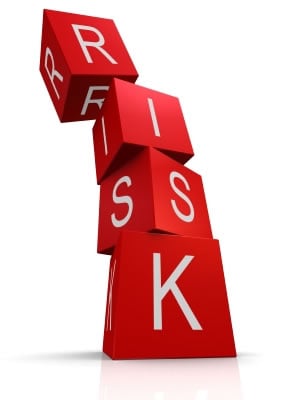أنشئ حسابًا أو سجّل الدخول للانضمام إلى مجتمعك المهني.
Please Vote for Best Answer.

Good and great answer by Mr. ACHMAD SURJANI keep it up.

“QUALITY RISK MANAGEMENT”
Risk Management: Standard of the Quality Management System ISO 9001:2015 introduced the requirement for the management of risk. The standard requires us, an Organization, to identify the risk in our processes or activity and plan the actions to address this risk. In the latest standard, the term “preventive action” was not stated anymore, instead, the concept of preventive action is now expressed through the use of “risk-based thinking”, the management and control of risks that may affect the ability of achieving work objectives.

I leave the answer to experts specialists in this field

I leave the answer to experts

Well answer add by Mr. Vaqar Ali

Quality and risk management are defined at Pmbok you can read it and find your answers


Quality Risk Management sits at the intersection of 3 different trends that are impacting many large industrial companies today: Quality, Sustainability, and Risk. In large companies, it would not be unusual to find director or vice president level positions in charge of each of these areas. There are also a lot of similarities between these three, including:
With these four important points in mind, we can start to discuss exactly how these three areas overlap and are starting to create a specific space that can be understood as Quality Risk Management.
Although the language of risk is not always familiar to quality professionals, most of what they do and are responsible for can be understood as either risk identification or risk mitigation activities. Quality business processes like those in the below list can all be considered risk identification and risk mitigation processes by another name:
Other quality business processes can also be thought of in terms of risk. Many of the quality activities that are mandated by government regulations, like those in the below list, are just risk controls put in place to mitigate already identified risks that exist in manufacturing:
When thought about this way, almost everything we do in quality is connected to risk management in one way or another.
Many companies have many different definitions for Sustainability but more and more there is a common understanding across the industry. LNS Research uses the following definition:
Sustainability is the set of leadership, business process, culture, and technology capabilities an organizations establishes to maintain its social license for conducting business in a particular community.
For industrial settings, these capabilities generally fall into the below buckets:
•Energy •GHG •Environmental •Health and Safety •Operational Risk •Product Stewardship •ReportingHopefully the tight relationship there between Quality and Sustainability is self evident based on the above discussions. Many of the same tools and issues that arise in quality are also used in managing Sustainability. In fact, for many companies it is still the quality department responsible for EH&S issues. It should also be noted that, as with Quality, much of what a Sustainability organization does is to manage risk. For example, improving performance in employee safety or environmental spills/releases is usually very tightly relate to reducing the risk profile of the firm in these areas.
Hopefully it is clear that risk management plays a big role in both Quality and Sustainability. Unfortunately, most professionals in these areas are not subject matter experts in Risk Management. For these reasons, it is important for Risk Management organizations to collaborate with Quality and Sustainability organizations. But it is also not the case that Risk Management can just focus on these areas. Risk Management organizations are concerned with identifying, quantifying, and mitigating all types of risk across an organization including: financial, security, compliance, product, operational, supply chain, and more. It is by taking a broad perspective on risk that a company can balance needs in Quality or Sustainability with the many other needs an organization has.

Based on all of the above discussion, a good first working definition for Quality Risk Management could be as follows:
Quality Risk Management is the set of leadership, business process, culture, and technology capabilities an organizations establishes to create a collaborative approach for for identifying, quantifying, and mitigating product, operational, supplier, and supply chain risks that can impact quality.
We are sure this definition will evolve as we continue to conduct research in these areas but hopefully this first pass has given you something to consider in your own exploration of these issues.



